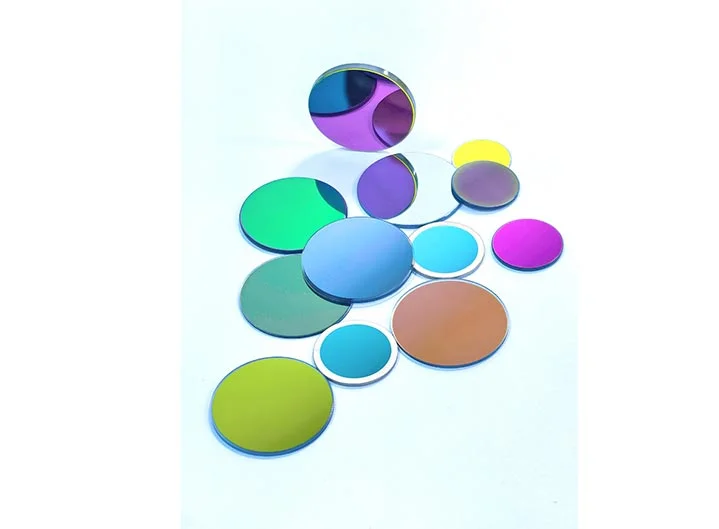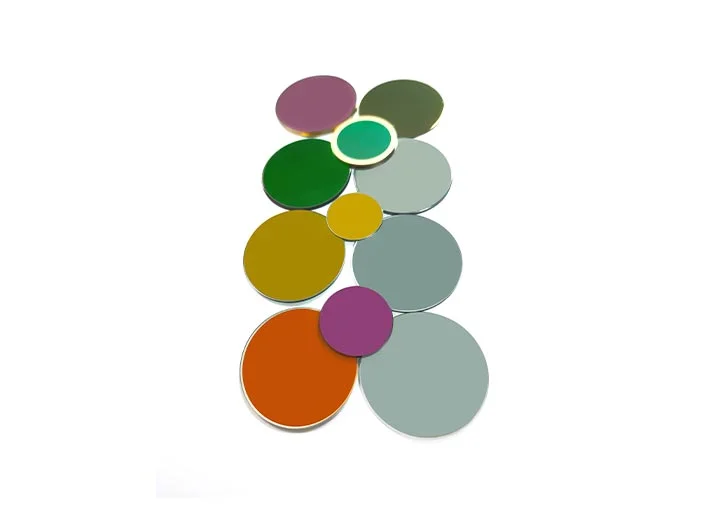Wide-band infrared filters (Infrared broad-band pass filters) are changing optical technology. They allow precise selection of light wavelengths over wide ranges. These special tools improve accuracy in many uses, from spotting gases to helping doctors diagnose illnesses. This article looks at the main features, working principles, and varied uses of wide-band infrared filters. It also highlights how Bodian’s creative solutions lead the industry. Learn how these filters boost sensitivity, work with different analysis methods, and explore new trends shaping their future in spectroscopy and imaging.
Overview of Wide-Band Infrared Filters
What Are Wide-Band Infrared Filters?
Infrared filter is a component that allows infrared light to pass through while effectively blocking other forms of light. They play a role in activities such as spectral analysis and infrared imaging. Unlike filters that restrict the wavelength range significantly wider range of infrared filters have a half power bandwidth (HPBW) set at more than 6 percent of the central wavelength. Band infrared filters, known as IWBP, are part of a category that encompasses narrowband filters (INBP), long pass filters (ILB), short pass filters (ISP), and anti-reflection filters (IAF).
Key Characteristics and Specifications
Wide-band infrared filters stand out for their exact light transmission and strong optical performance. They use multiple layers of coatings to allow light to pass through efficiently. These layers reduce unwanted reflections and energy loss. Modern manufacturing methods make these filters tough and stable in different conditions. They work across a broad range, including ultraviolet, visible, and infrared light. This makes them perfect for tasks needing precise spectral analysis or clear imaging in many fields.
Applications of Wide-Band Infrared Filters in Spectral Analysis
How Do They Contribute to Comprehensive Spectral Analysis?
Wide-band infrared filters are vital for detailed spectral analysis. They pick out specific light wavelengths and block others. This helps identify and measure spectral parts accurately. For example, they are useful in gas detection, environmental checks, and studying materials. By focusing on the right wavelengths, they make analysis more reliable.
Can They Enhance Accuracy in Infrared Spectroscopy?
Yes, wide-band infrared filters greatly improve accuracy in infrared spectroscopy. They boost the signal-to-noise ratio, which means clearer data. Only the needed wavelengths reach the detector, so there’s less interference from other light. This leads to more trustworthy results. These filters are crucial in fields like healthcare, car diagnostics, and safety monitoring.
Technological Principles Behind Wide-Band Infrared Filters
What Materials Are Used in Their Composition?
The materials in wide-band infrared filters are key to their success. They often use dielectric materials or semiconductor materials. The choice depends on the light range, heat resistance, and durability needed. Special thin-film techniques create layered structures that improve how much light passes through.
How Do They Control Light Transmission?
Wide-band infrared filters manage light using interference in their layered coatings. Each layer’s thickness is carefully set to let certain wavelengths pass or block others. This precise control ensures the filters work well across the chosen light range. It makes them effective for specific tasks.
Advantages of Using Wide-Band Infrared Filters
How Do They Improve Sensitivity and Precision?
Band infrared filters play a crucial role in enhancing the accuracy and precision of analysis by allowing a broad spectrum of infrared light to pass through while blocking out unwanted light sources. This helps minimize interference and enhances the quality of measurements, particularly in applications such as gas detection, environmental assessments, and medical diagnostics. The meticulous planning of these filters and their layered coatings guarantees that exceptional performance levels are achieved consistently over time, withstanding challenging conditions thanks to techniques that enhance durability and stability crucial for tasks demanding reliable outcomes in the long run.
Why Are They Versatile Across Different Analytical Techniques?
Wide-band infrared filters are very flexible. They work across ultraviolet, visible, and infrared ranges. This makes them useful in many industries. For instance, in infrared spectroscopy, they isolate specific light ranges to identify chemicals accurately. In thermal imaging, they make images clearer by removing extra light.
These filters fit easily into tools like spectrometers, detectors, and cameras. They work well without needing big changes to equipment. This adaptability makes them a great choice for many analysis methods.
Integration of Bodian’s Products in Analytical Applications
When precision meets performance in infrared optical technology, Bodian’s wide-band filters set the industry standard.
What Features Define Bodian’s Wide-Band Infrared Filter Solutions?
Product Range and Customization Options
Bodian offers a wide variety of wide-band infrared filters for different needs. Their products include infrared long pass filters (ILP), short pass filters (ISP), anti-reflection filters (IAP), broadband filters (IWBP), and narrowband filters (INBP). Each filter is carefully made to perform well in its specific task.
Bodian also provides custom options. Whether you need a filter for gas detection or thermal imaging, they can design one to fit your needs. This flexibility helps you get the best results in your analysis.
Performance Metrics and Reliability Standards
Bodian’s wide-band infrared filters are built with advanced methods. These ensure high reliability and great performance. The multilayer coatings reduce light loss and increase transmission. The filters meet strict quality standards, so they work well even in tough conditions.
These features make Bodian’s products a top choice. They often perform better than what the industry expects, making them trusted by professionals who need reliable optical tools.
How Do Bodian’s Products Enhance Analytical Outcomes?
Bodian’s wide-band infrared filters improve analysis by offering great precision and reliability. They isolate specific wavelengths, ensuring accurate data. In healthcare, they help detect biomarkers by removing unwanted light. This leads to better diagnoses.
In environmental monitoring, they make pollutant detection more accurate by focusing on the right light ranges. In automotive and aerospace fields, they provide dependable measurements. Bodian’s filters are key to getting better results in many applications.
For top-notch solutions tailored to your needs, check out Bodian’s product range today.
Future Trends and Innovations in Wide-Band Infrared Filter Technology
What Emerging Materials Will Enhance Performance?
New materials will change wide-band infrared filter technology. Scientists are studying advanced dielectric materials that resist heat better and cover more wavelengths. These will make filters more durable and efficient. They may also cost less to make.
Metal-dielectric mixes are also being explored. These can increase light transmission while staying reliable. Such materials will open new possibilities for precise spectral analysis.
How Will They Integrate with Advanced Analytical Instruments?
Future wide-band infrared filters will work with next-generation tools. For example, automated spectrometers with these filters could analyze data in real time with great accuracy. Miniaturized sensors with these filters could lead to portable diagnostic devices. These could work in many different settings.
These advancements will expand what the filters can do. They will also make high-precision analysis easier for more people. As technology grows, wide-band infrared filters will remain central to advancing analytical science.
FAQs
Q1: Why are wide-band infrared filters important for spectral analysis?
A: They let specific wavelengths pass while blocking others. This improves accuracy in identifying and measuring spectral parts.
Q2: Can wide-band infrared filters be customized for specific uses?
A: Yes, they can be made to fit exact needs for fields like healthcare, environmental checks, and aerospace.
Q3: What future trends are coming in wide-band infrared filter technology?
A: New materials will improve performance. Integration with advanced tools will bring better capabilities.



